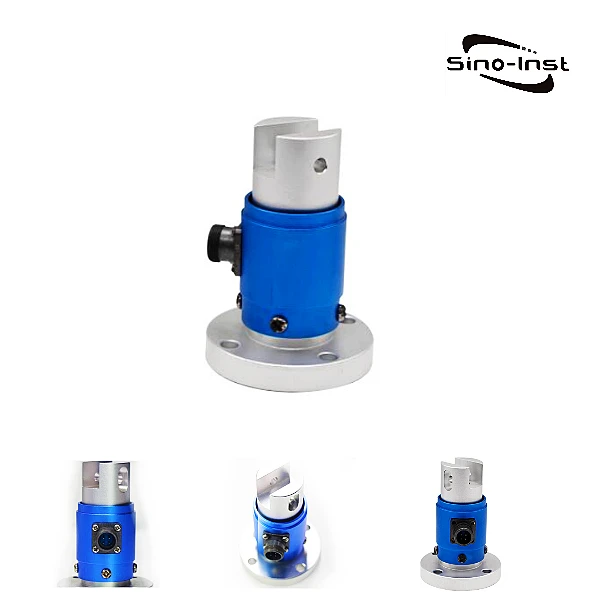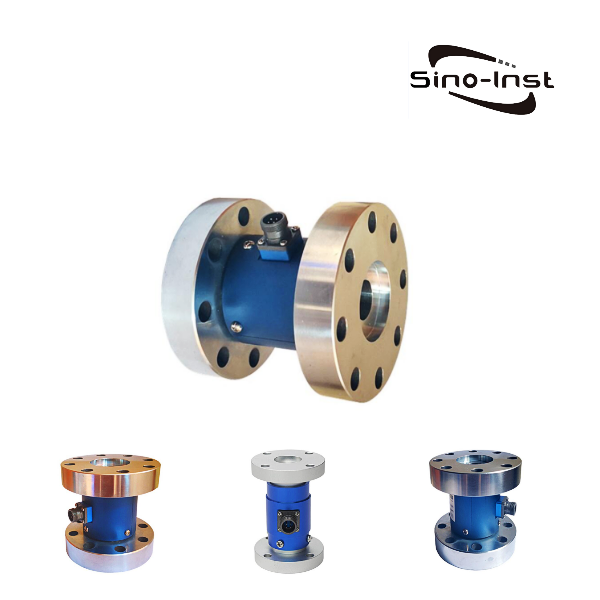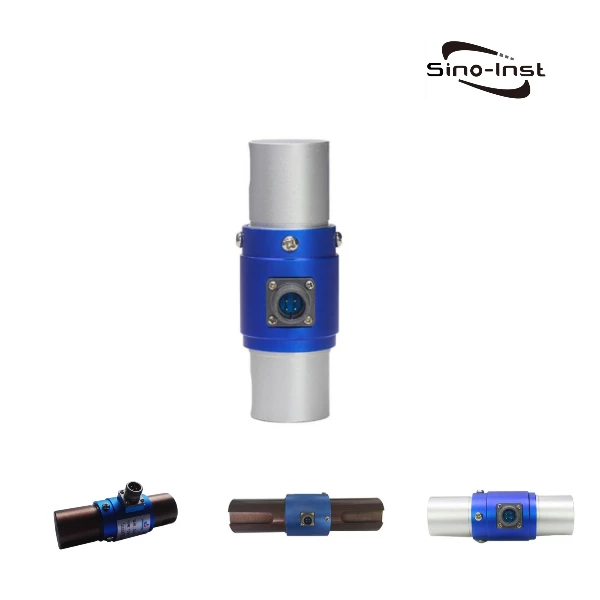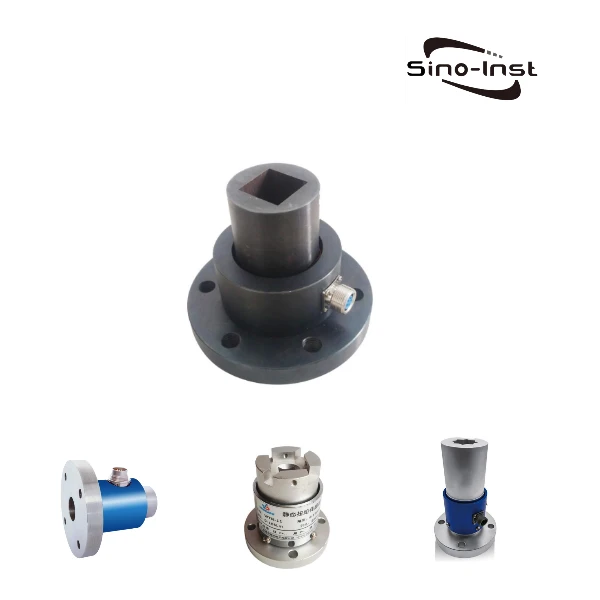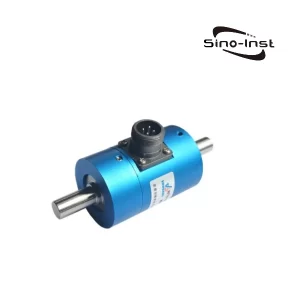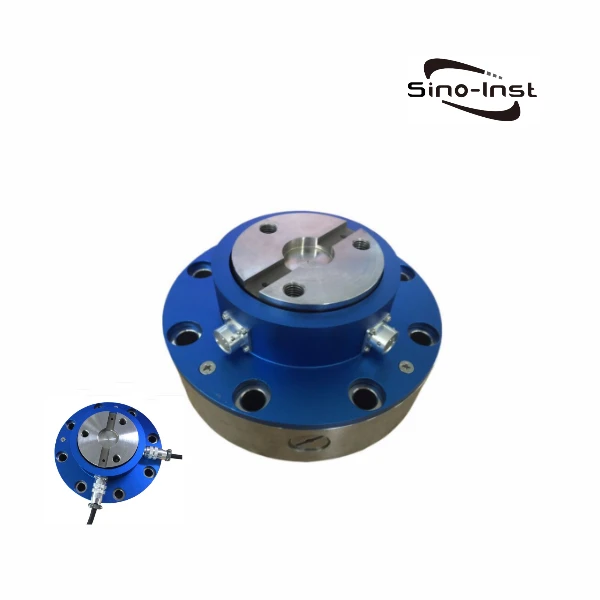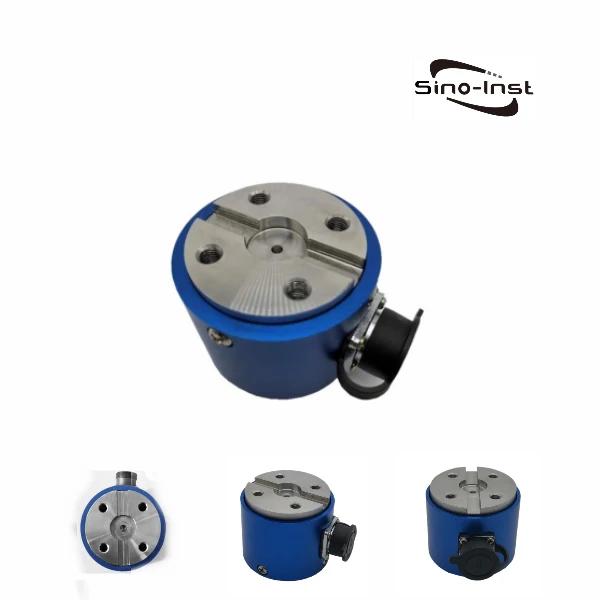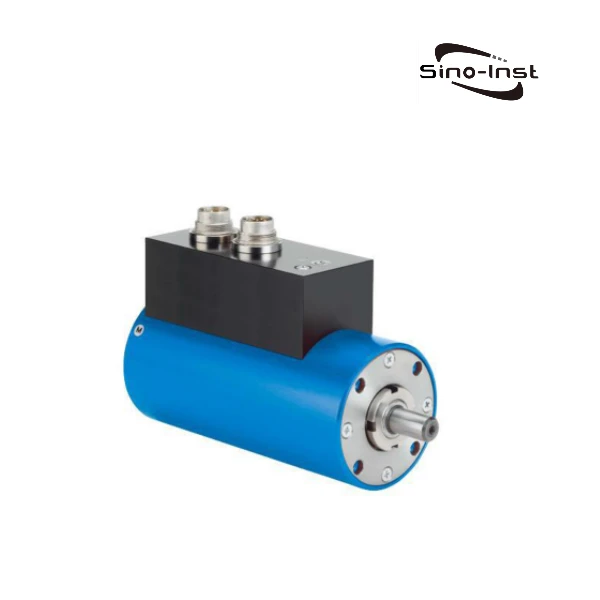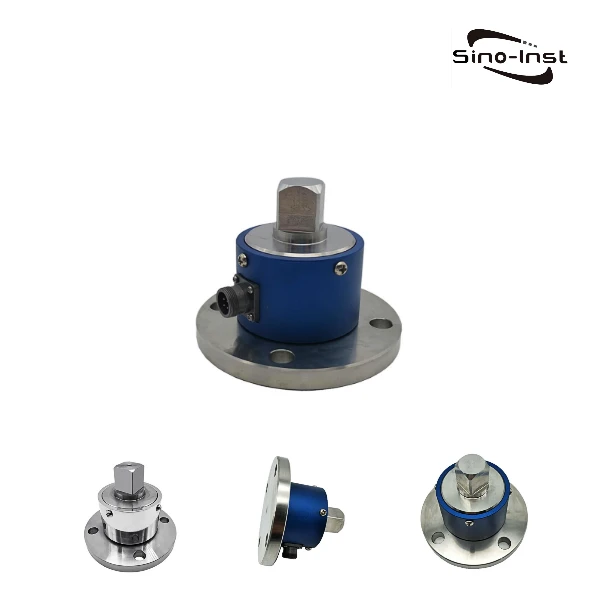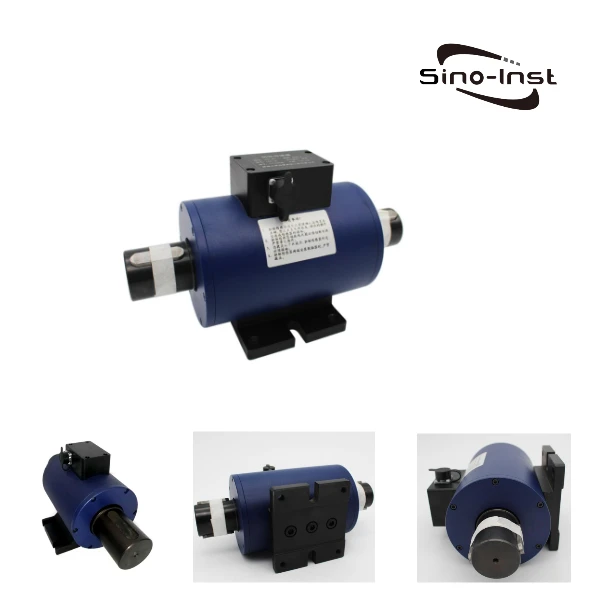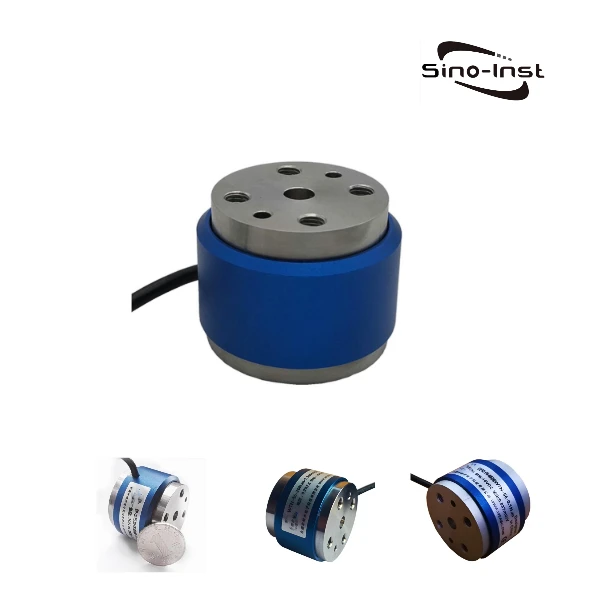
56 Micro Reaction Torque Sensor is a small range static torque sensor specially designed for small installation space. There are mounting flanges on the bottom of both ends. Small size, suitable for small and compact spaces. Low range static torque measurement, 0-0.1-20N.m optional. Applications include fastener testing, engine testing, automotive and aerospace engine testing, automotive brake testing, and prosthetic limb testing, among others.
Features of 56 Micro Reaction Torque Sensor
- Easy integration into OEM applications
- Designed for Torque Calibration
- Aluminum or stainless steel construction
- Mechanical structure with overload protection
- Metal foil strain gauge technology.
- Small size, convenient installation with flange structure
- Stainless steel or aluminum alloy structure, high precision, good stability.
- Static torque test in preparation, torque wrench and other torque testing equipment;
- Small size, suitable for small and compact spaces
- Low range static torque measurement, 0-0.1-20N.m optional
- Torque can be measured in both positive and negative directions
Technical Parameters
| Parameter | Technical specifications |
| Range | 0~0.1, 0..2,0.5,,1,2,3,5,10,20 Nm |
| Sensitivity | 1.5±10% mV / V |
| Zero Output | ±1% F.S. |
| Non-linearity | ±0.1, 0.3% F.S. |
| Hysteresis | ≤±0.05% F.S. |
| Repeatability | ≤±0.05% F.S |
| Creep | ≤±0.03% F.S/30min |
| Temperature Sensitivity Drift | 0.03% F.S. / 10℃ |
| Zero Temperature Drift | 0.03% F.S. / 10℃ |
| Input Resistance | 350,750±10Ω |
| Input resistance | 350,700±5Ω |
| Response Frequency | 100μS |
| Insulation resistance | ≥5000MΩ/ 100VDC |
| Excitation Voltage | 10VDC(9-15VDC) |
| Temperature Compensation Range | -10 ~ 60℃ |
| Operating Temperature Range | -20 ~ 65°C |
| Safe Overload | 150% F.S. |
| Limit Overload | 200% F.S. |
| Cable Size | Ø5.2×3m |
| Electrical connection | Red/E+, Black/E-, Green/S+, White/S- |
| Material | Aluminum, stainless steel or alloy steel |
| Other requirements | Customized available |
Dimensions
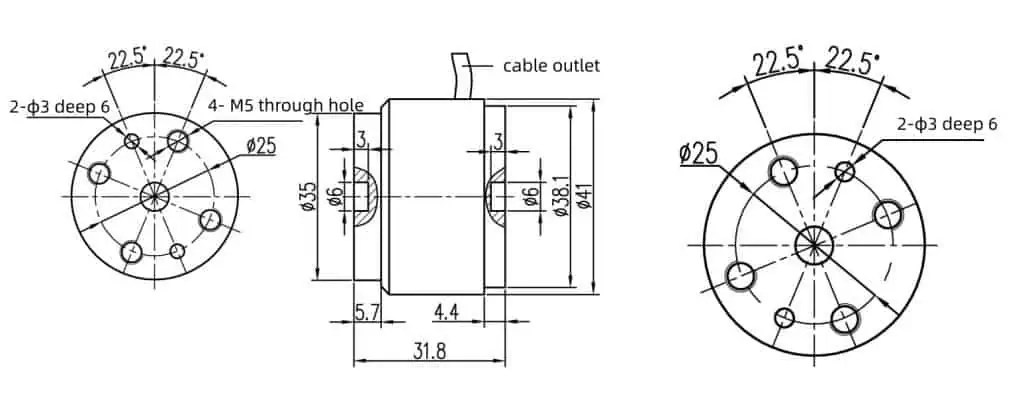
Learn More About 56 Micro Reaction Torque Sensor | For Small Range, Tight Spaces
If you cannot find an answer to your question in our 56 Micro Reaction Torque Sensor | For Small Range, Tight Spaces, you can always contact us and we will be with you shortly.
More Featured Torque Sensors For Sale
Sino-Inst is a manufacturer of 56 Micro Reaction Torque Sensor | For Small Range, Tight Spaces. We offer more than 10 types of Micro Reaction Torque Sensors. Micro Reaction Torque Sensors can measure a variety of different mechanical power, rotational speed and torque measuring devices.
Micro Reaction Torque Sensor is also called reaction static torque sensor, torque transducer. Mainly used for torque measurement in Static situations. Micro Reaction Torque Sensor, with flange connection at both end; suitable for samll static torque measurement.
Sino-Inst’s Micro Reaction Torque Sensors, made in China, have good quality, with better prices. Our Reaction Torque Sensors are widely used in China, India, Pakistan, USA and other countries.
Sino-Inst’s entire team is well trained, so we can ensure that each customer’s needs are met. If you need any help with your product requirements, whether it is a Micro Reaction Torque Sensor, level sensors, or other equipment, please give us a call.
Request a Quote

Wu Peng, born in 1980, is a highly respected and accomplished male engineer with extensive experience in the field of automation. With over 20 years of industry experience, Wu has made significant contributions to both academia and engineering projects.
Throughout his career, Wu Peng has participated in numerous national and international engineering projects. Some of his most notable projects include the development of an intelligent control system for oil refineries, the design of a cutting-edge distributed control system for petrochemical plants, and the optimization of control algorithms for natural gas pipelines.
56 Micro Reaction Torque Sensor | Small range, Tight Spaces

56 Micro Reaction Torque Sensor is a small range static torque sensor specially designed for small installation space. There are mounting flanges on the bottom of both ends. Small size, suitable for small and compact spaces. Low range static torque measurement, 0-0.1-20N.m optional. Applications include fastener testing, engine testing, automotive and aerospace engine testing, automotive brake testing, and prosthetic limb testing, among others.
Product SKU: 56 Micro Reaction Torque Sensor | For Small Range, Tight Spaces
Product Brand: Sino-Inst
Product Currency: USD
Product Price: 165
Price Valid Until: 2029-09-09
Product In-Stock: InStock
5

